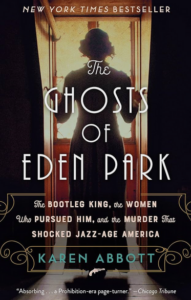 Public enemies : America's greatest crime wave and the birth of the FBI, 1933-34
by
Bryan Burrough
Public enemies : America's greatest crime wave and the birth of the FBI, 1933-34
by
Bryan Burrough
Call Number: HV6783 .B85 2004
ISBN: 1594200211
Publication Date: 2004-07-15
Acclaimed Vanity Faircontributor Bryan Burrough brings to life the most spectacular crime wave in American history: the two-year battle between J. Edgar Hoover's FBI and John Dillinger, Bonnie and Clyde, Baby Face Nelson, Pretty Boy Floyd, and the Barkers. In 1933, police jurisdictions ended at state lines, the FBI was in its infancy, the highway system was spreading, fast cars and machine guns were easily available, and a good number of the thirteen million Americans who were out of work blamed the Great Depression on the banks. In short, it was a wonderful time to be a bank robber. On hand to take full advantage was a motley assortment of criminal masterminds, sociopaths, romantics, and cretins, some of whom, with a little help from J. Edgar Hoover, were to become some of the most famous criminals in American history. Bryan Burrough's grandfather once set up roadblocks in Alma, Arkansas, to capture Bonnie and Clyde. He didn't catch them. Burrough was suckled on stories of the crime wave, and now, after years of work, he succeeds where his grandfather failed, capturing the stories of Bonnie and Clyde, Dillinger, Baby Face Nelson, and the rest of the FBI's nemeses, weaving them into a single enthralling account. For more than forty years, the great John Toland's Dillinger Dayshas stood as the only book that provides the entire big picture of this fabled moment in American history. But an extraordinary amount of new material has come to light during those forty years, a good deal of it unearthed by Burrough in the course of his own research, and Public Enemiesreveals the extent to which Toland and others were fed the story the FBI wanted them to tell. The circles in which the "public enemies" moved overlapped in countless fascinating ways, large and small, as Burrough details. The actual connections are one thing; but quite another is the sense of connectedness Hoover created in the American public's mind for his own purposes. Using the tools of an increasingly powerful mass media, Hoover waged an unprecedented propaganda campaign, working the press, creating "America's Most Wanted" list, and marketing the mystique of the heroic "G-men" that successfully obscured an appalling catalog of professional ineptitude. When the FBI gunned down John Dillinger outside a Chicago movie theater in the summer of 1934, Hoover's ascent to unchecked power was largely complete. Both a hugely satisfying entertainment and a groundbreaking work with powerful echoes in today's news, Public Enemiesis the definitive history of America's first War on Crime.


